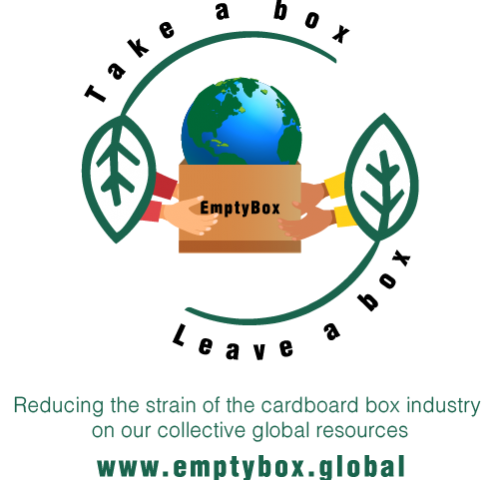Reducing the strain of the cardboard box industry on our global resources
Seattle — 01/27/ 2022 — Today, EmptyBox announced they are launching into Phase 1 of their plans for a global nonprofit aimed at reducing the impact of the cardboard box industry on our global resources by promoting and facilitating reuse.
“While there are a number of environmental challenges right now, this is one we’ve chosen to tackle,” said Lillian Taylor, Founder at EmptyBox.
Impact
The global human population is projected to reach somewhere between 9 to 13 billion by 2100; about 1.3 to 1.7 times our current global population (United Nations 2019). With this growth, the over-exploitation of our planet’s finite land, wildlife and other natural resources will only magnify.
A circular economy can be described as a system without the gaps in the traditional linear life cycle of resources from supply, demand and disposal to renew and recycle (Abejón et al. 2020). It integrates recycling, but to a weaker extent given that the overarching focus is to promote the use and reuse of products until the end of their service life. Further, terminating the exploitation of resources and manufacturing of products which cannot be reliably recycled, repaired or composted at the end of their service life.
At EmptyBox, we aim to promote the circular use of cardboard packaging. Although paper and paperboard waste has decreased steadily in the US since it’s peak around 2000 (~87 million USD tons), over a 67million tons are still disposed of which only around 68% reported as recycled (EPA 2018). It is critical to acknowledge the further truth that 42% of the supposedly “recycled” paper and paperboard are sent offshore where most never meet a recycling plant in their life cycle (EPA 2016). Further, recent research suggests that cardboard, even when recycled, still carries a large environmental footprint (Ferreira 2017).
You may ask why recycling isn’t enough, recycling is a great alternative to a landfill and a single cardboard box can be recycled up to seven times. However, there’s a problem. Prior to 2017, the US’s largest buyer of OCC (old corrugated cardboard) bales was China as they lack natural resources for virgin fiber (from farmed trees). Due to increasing contaminants (trash, mold, etc.) the Chinese government stopped allowing the import of US bales. The price dropped and so did the market. Bales are now stacking up and going directly into landfills.
So you’re paying to recycle, but they are not likely getting recycled. If they are, there are transportation costs and intensive use of resources, such as water, to turn those boxes back into pulp to be used again. Not to mention the manufacturing process and distribution back to manufacturers.
That’s why it’s EmptyBox’s mission to facilitate the reuse rather than recycle of cardboard boxes by installing community reuse stations and a peer to peer connection platform to connect those that need boxes with those that need to dispose of boxes.
Read more at www.emptybox.global

